C/2013 US10 (Catalina) is an Oort Cloud comet discovered on 31 October 2013 by the Catalina Sky Survey.
It reached perihelion on 15 November 2015 at a distance of 0.82 AU from the Sun. It has a parabolic orbit, meaning it will never be seen again.
Throughout its appearance in the night sky over Earth, many comet chasers and astrophotographers observed and imaged Catalina, noting its change in appearance over the course of a few months.
Mark Griffith captured image below of C/2013 US10 (Catalina) in December 2015 from Wiltshire, UK, using an Atik 383L camera, Teleskop Service 12-inch Ritchey-Chretien telescope, Sky-Watcher EQ8 mount, Astronomik LRGB filters, Hutech IDAS light pollution filter and Astro physics 0.67 reducer.
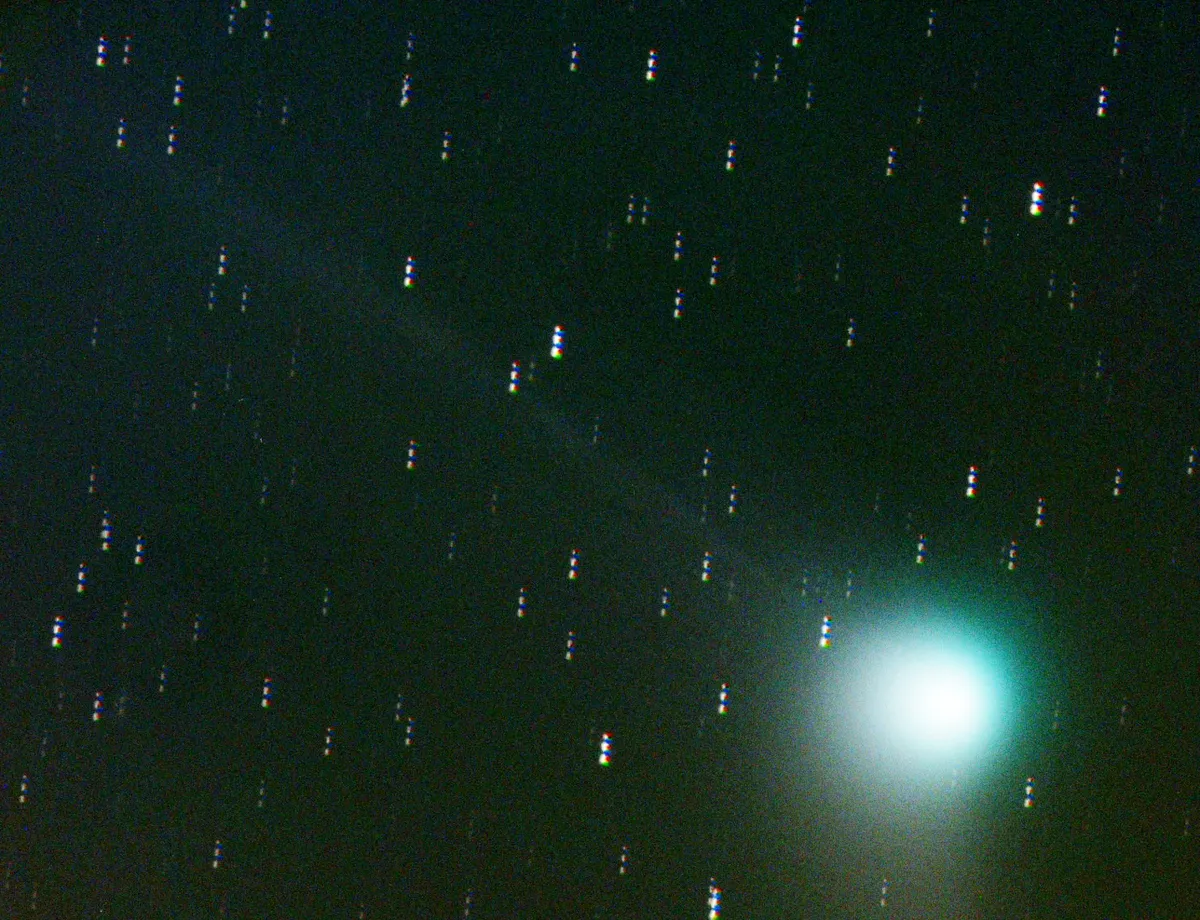
But one person who dedicated a lot of time and skill to observing and photographing Catalina over several months is José J. Chambo, who captured the image below from Siding Spring Observatory in Australia on 22 June 2015, as it approached 23 arcminutes north of barred spiral galaxy NGC 7723 in Aquarius.
José said "Comet C/2013 US10 (Catalina) is here around mag. 10.5 and shows a short dust tail. It's due to increase in brightness, reaching mag. 6 by the beginning of 2016."
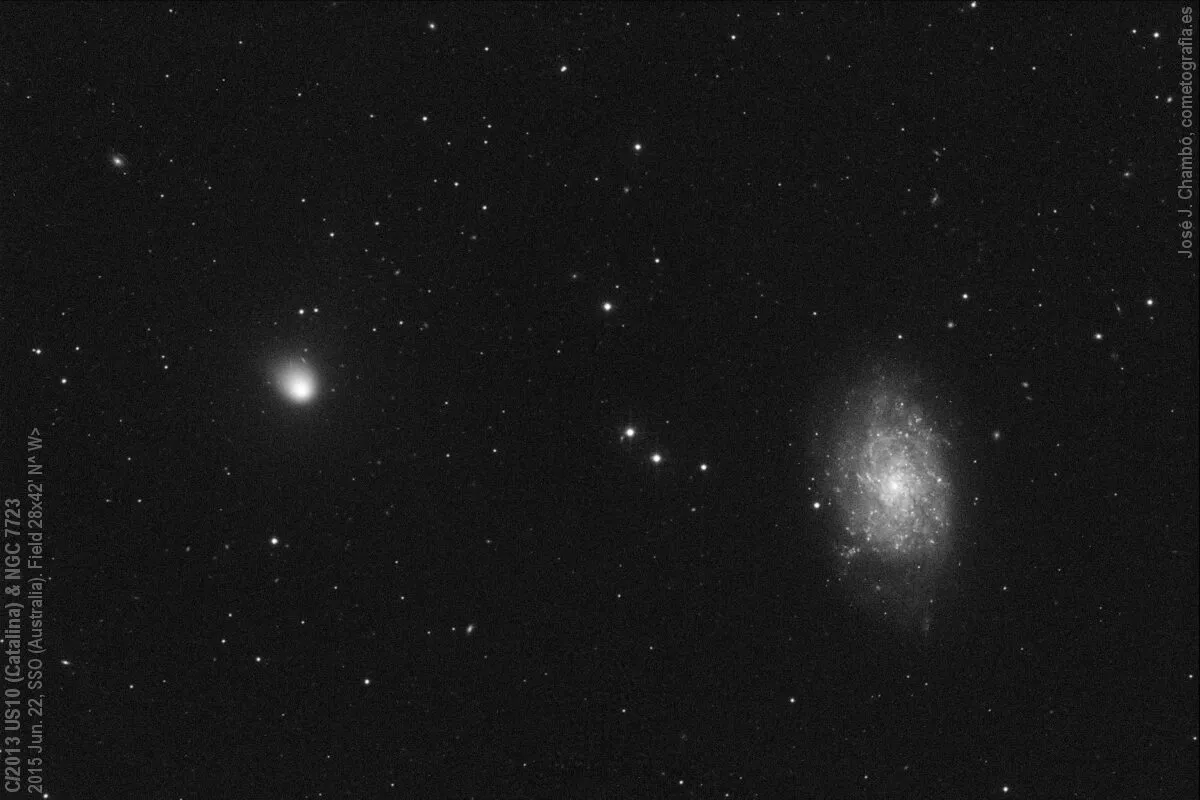
José then captured the image below on 24 June 2015, showing the comet 28 arcminutes from barred spiral galaxy NGC 7793.
He said "Unlike the image I captured 2 days ago, this time I was able to take the necessary shots to compose a colour image. Aside from an aesthetic improvement, this version highlights a coma with strong greenish tone, as well as a halo of the same colour that extends out to a diameter of 6 arcminutes."

José imaged Comet C/2013 US10 (Catalina) again on 8 August 2015, showing an increase in brightness to mag. 7.

The image below was captured on 9 August 2015, showing a bright green coma as well as two tails: a dust tail to northeast (toward right top) and a faint ionic tail northwards (toward right).
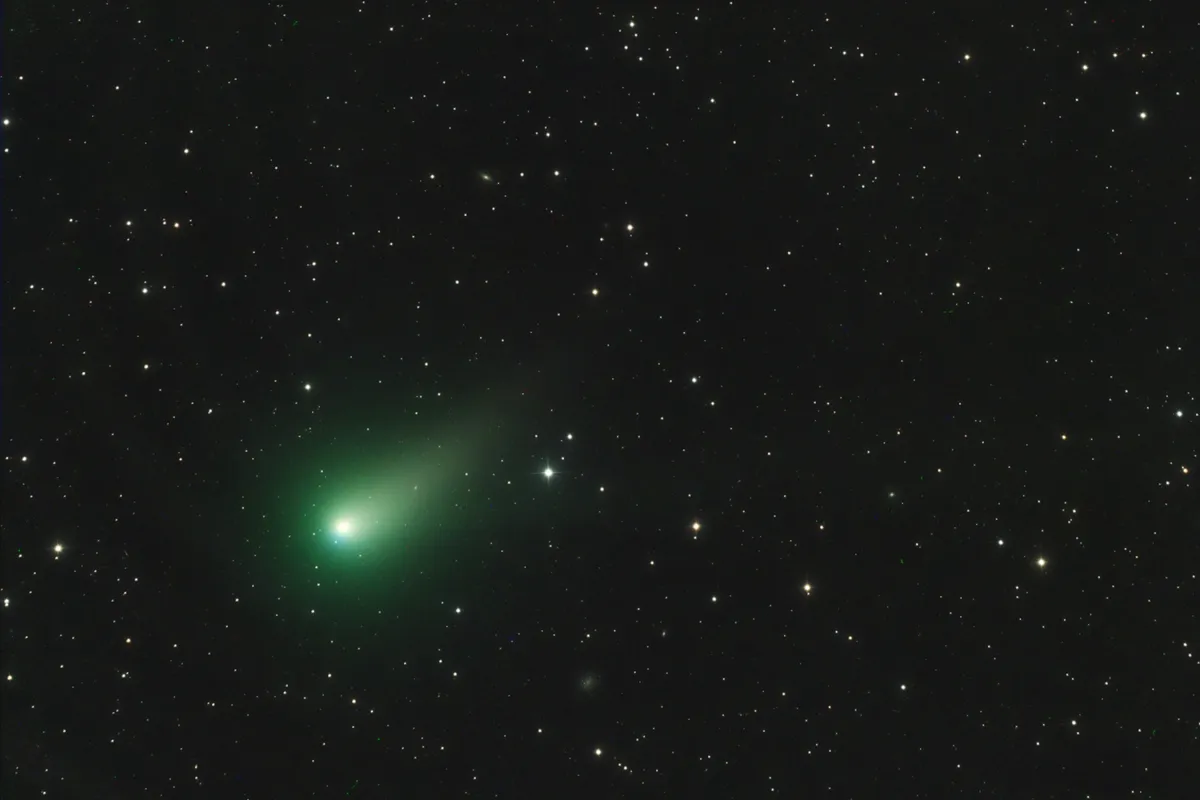
Then on 17 September 2015, José photographed the comet again, this time revealing an increase in brightness to mag. 6.5.
José said: "Comet C/2013 US10 (Catalina) is now observable using binoculars from the Southern Hemisphere.
"In this widefield image the comet is located near the bright star Alpha Lupi into constellation of the Wolf. The coma shows a strong greenish emission of C2.
"Meanwhile its dust tail is projected toward southeast with a longitude of more than 1.5 degrees that ends up merging with the Milky Way, which fills the bottom of the image."
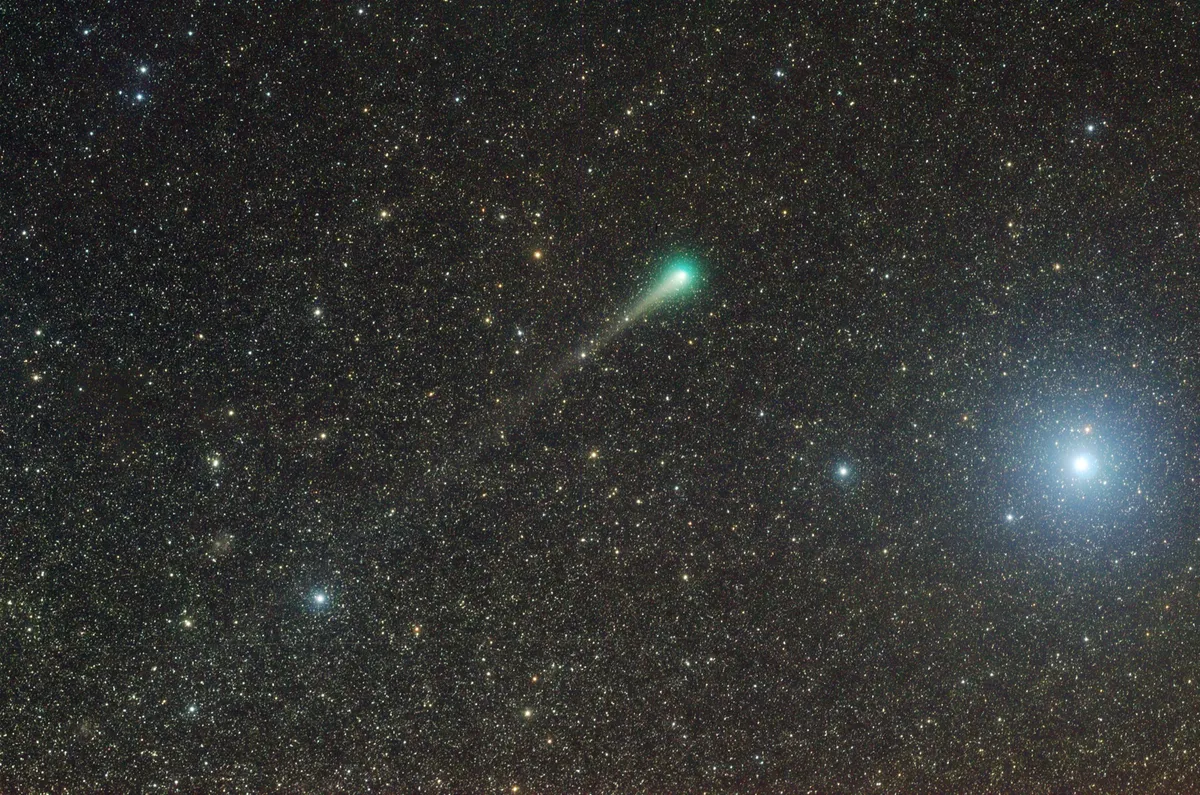
José captured the below image on 1 October 2015, his last from the Southern Hemisphere before the comet became no longer observable due to its angular approach to the Sun.
José said: "In this wide field image the comet shines near mag. 7 and shows a greenish coma, due to gas emission of diatomic carbon, with 8 minutes of diameter.
"The tail is 3 degrees long and seen here against the rich stellar background between constellations of Centaurus and Lupus, shows detail and structural shapes. The brightest star at the top of the image is mag. 4 B Centauri."
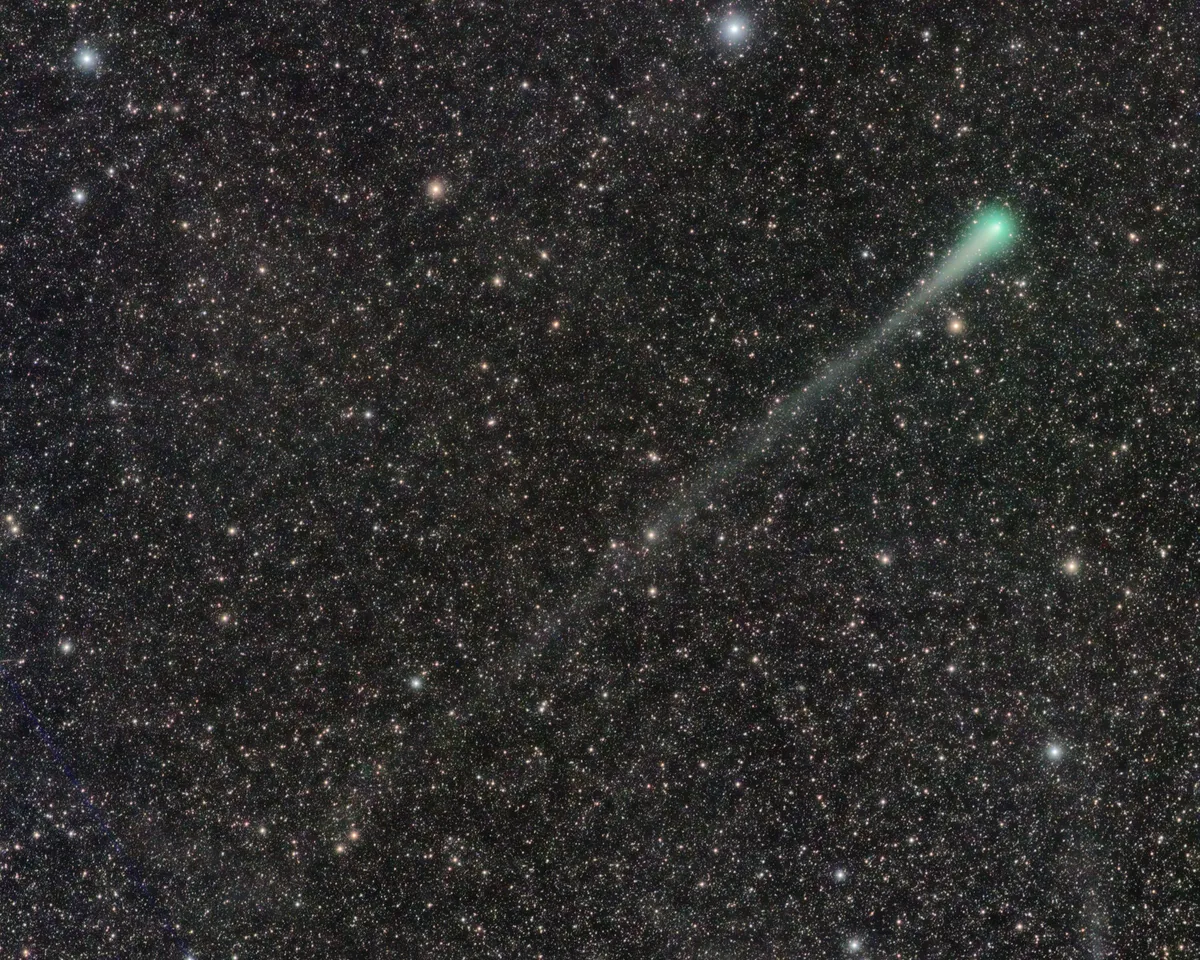
José captured his next image of Catalina on 11 January 2016 from Mayhill, New Mexico, USA.
He said: "Since my last image in December, the comet has evolved, showing an increase in the size of the tail formed by heavy particles that revolve toward southwest (toward down left in the image).
"The ionic tail is directed toward west (right), more than 5 degrees long and disappearing out of the image, showing several knots and structures.
"Of all the galaxies that can be seen in the image the one that most stands out is NGC 5371, in the middle."

The next image was captured on 13 January 2016, also from Mayhill.
José said: "Its long ionic tail is projected toward west at a distance of more than 6 degrees, but is more faint and with less detail than in my previous image taken only two days ago.
"However the dust tail, appearing brighter and shorter, shooting off to the south, has barely changed.
"Along with several small galaxies, in the upper right you can see the classical spiral galaxy M51: the Whirlpool Galaxy."

José captured his next image of Comet Catalina on 17 January 2016 from Valencia, Spain, showing a nice conjunction between the comet and the Pinwheel Galaxy (seen in the left of the image).
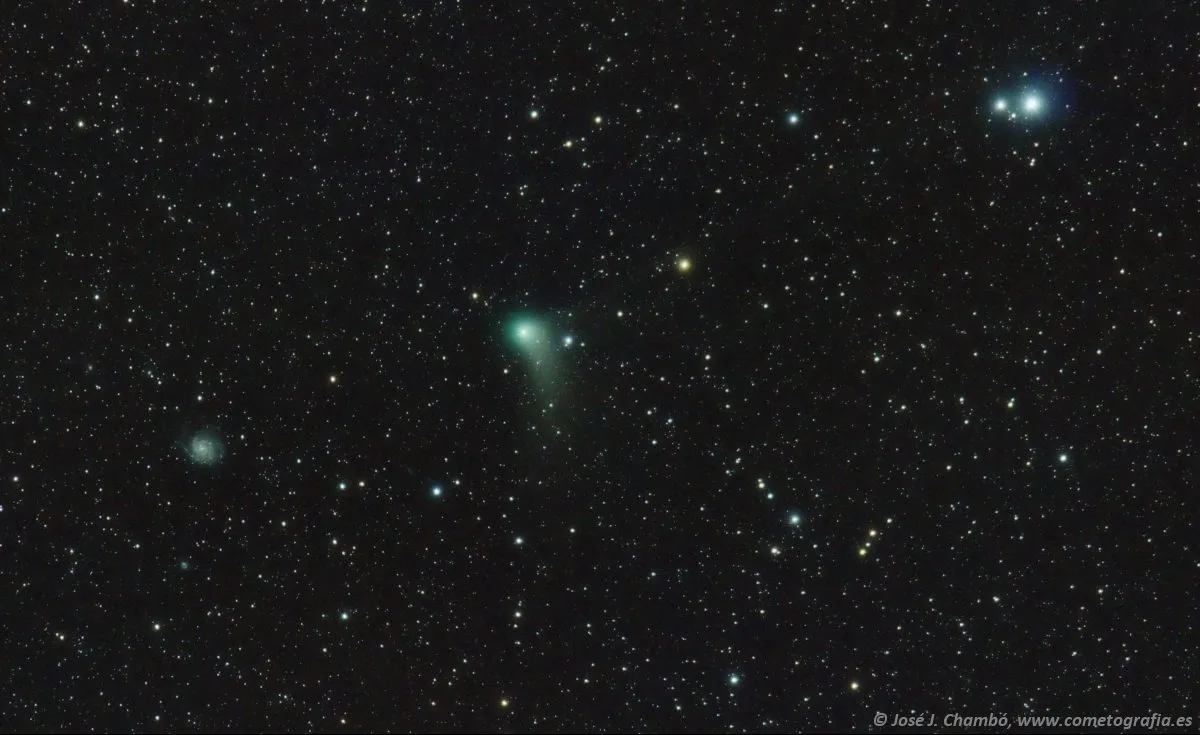
José's next image was also captured on 17 January 2016, but this time remotely from Mayhill, New Mexico.
Again, the Pinwheel Galaxy can be seen in the left of the image, along with stars Mizar and Alcor surrounded by a bright halo (induced by telescope optics) on the right.
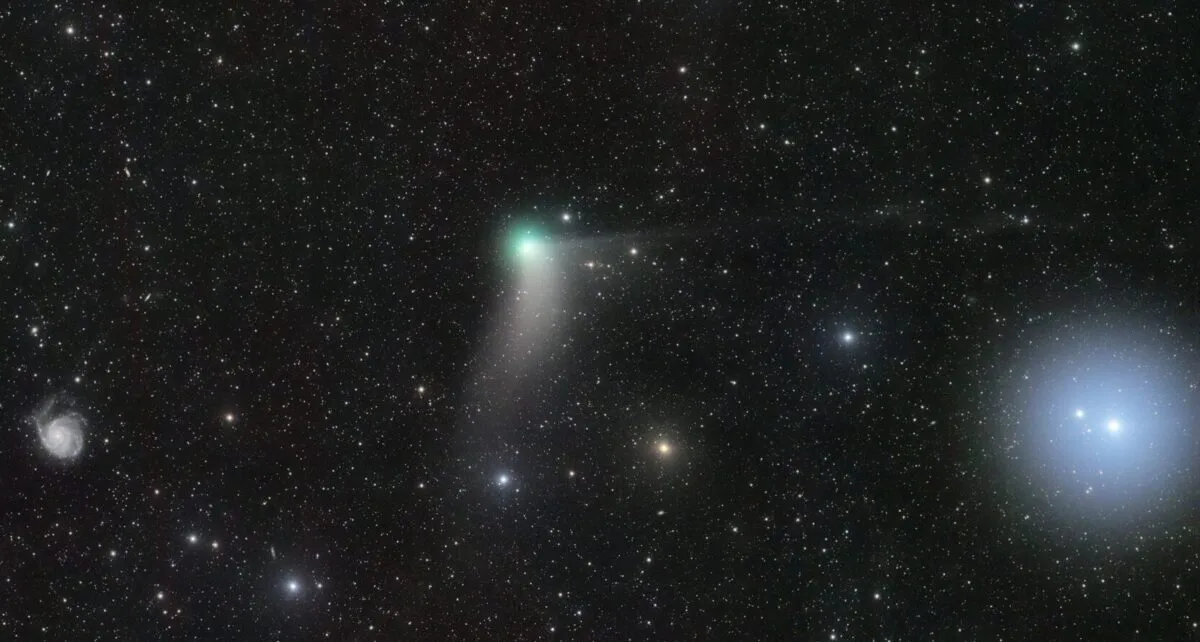
José's final image of Comet Catalina was captured on 6 March 2016 from Valencia, Spain, when the comet was 2AU from the Sun.
He said: "It's showing a lot of changes since the last time I shot it nearly two months ago. Its brightness has dropped to mag. 9.5, its gas tail has gone and the dust tail with a longitude of half degree has been stretched because of our perspective as Earth approaches its orbital plane."
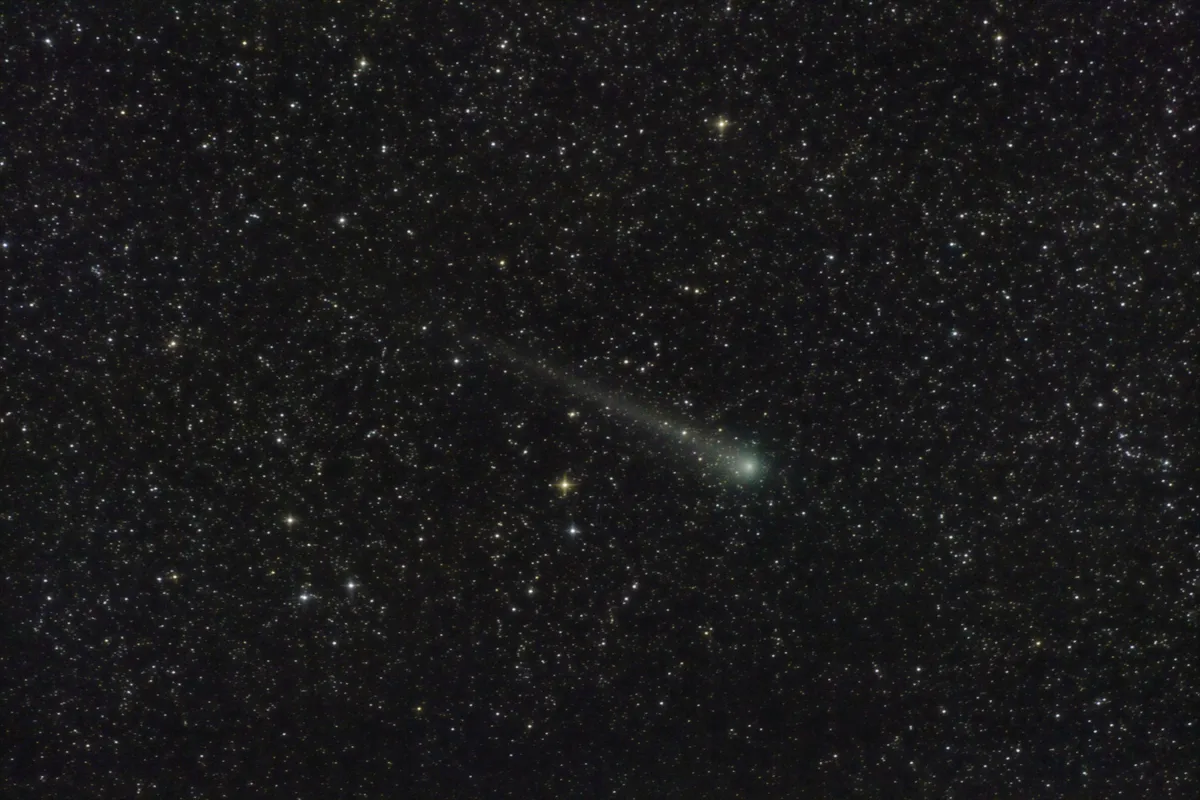
Thanks to José for sharing his images and observations.
For more of José's work, be sure to check out his Astrobin page, or you can also read similar reports by him on Comet C/2017 O1 ASASSN and Comet C/2015 V2 Johnson.